As an Amazon Associate I earn from qualifying purchases. This website also participates in other affiliate programs and may earn commissions if you shop through the links used on this website.
(This article was originally published on September 10, 2022 and was last updated on September 10, 2022)
Cinnamon basil and Thai basil are two different cultivars of “normal basil,” but due to a linguistic quirk, these two very different basil varieties are sometimes confused for one another. If you’re wondering what’s the difference between Thai basil vs cinnamon basil, keep reading for the scoop!
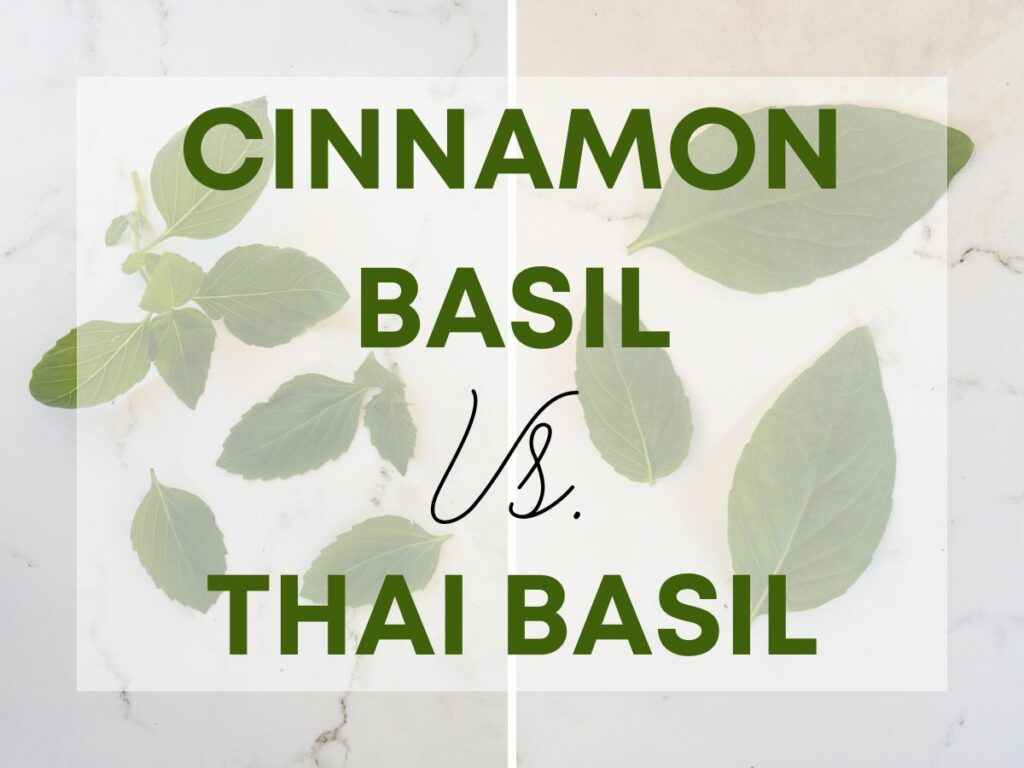
Cinnamon Basil and Thai Basil Are Different Cultivars of Basil
Cinnamon basil and Thai basil are both members of the Ocimum basilicum family, and are cultivars of “normal basil” (sweet basil, Genovese basil).
O. basilicum var. thyrsiflora is most commonly known in North America as Thai basil, although it is sometimes mistakenly called cinnamon basil.
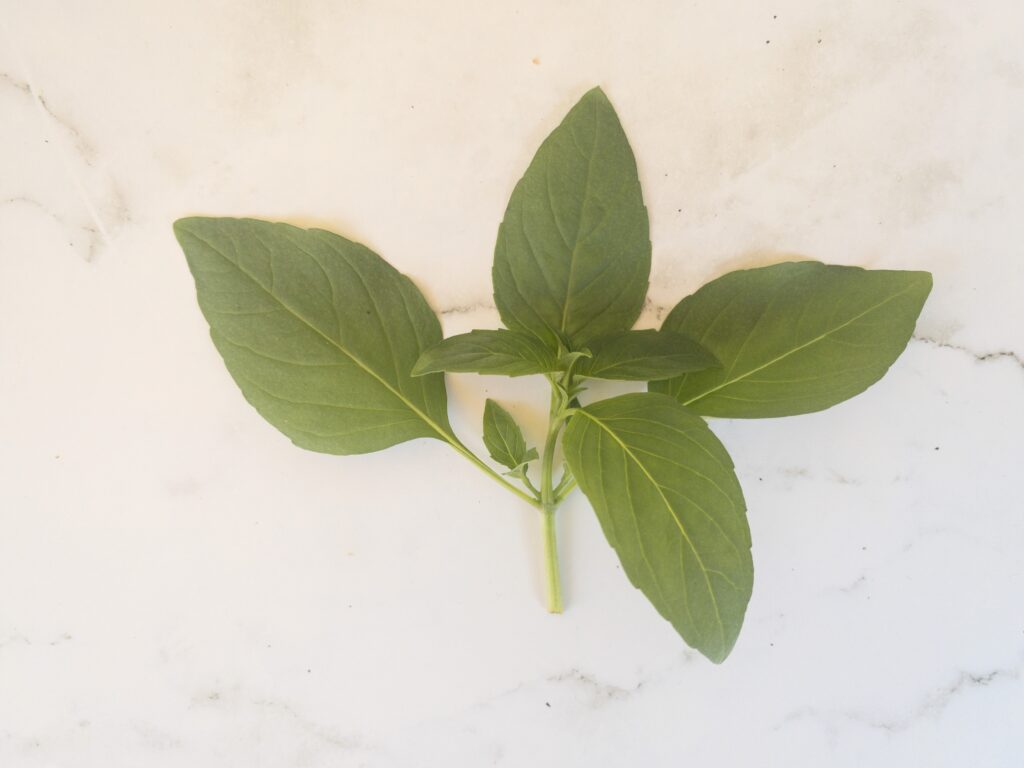
Across southeast Asia, where it’s commonly used in regional dishes, it has different names. Horapha (Thailand), húng quế / rau quế, or rau húng quế (Vietnam), chi neang vorng (Cambodia) and káu-chàn-thah (Taiwan) are some of the regional names for the type of basil North Americans commonly call Thai basil.
O. basilicum ‘Cinnamon’ is a different type of basil, mostly called Cinnamon Basil in North America, but also sometimes known as Mexican basil or Mexican spice basil (despite it being called Mexican basil, it’s not typically used in Mexican cooking, so don’t try adding it to your tacos just yet).
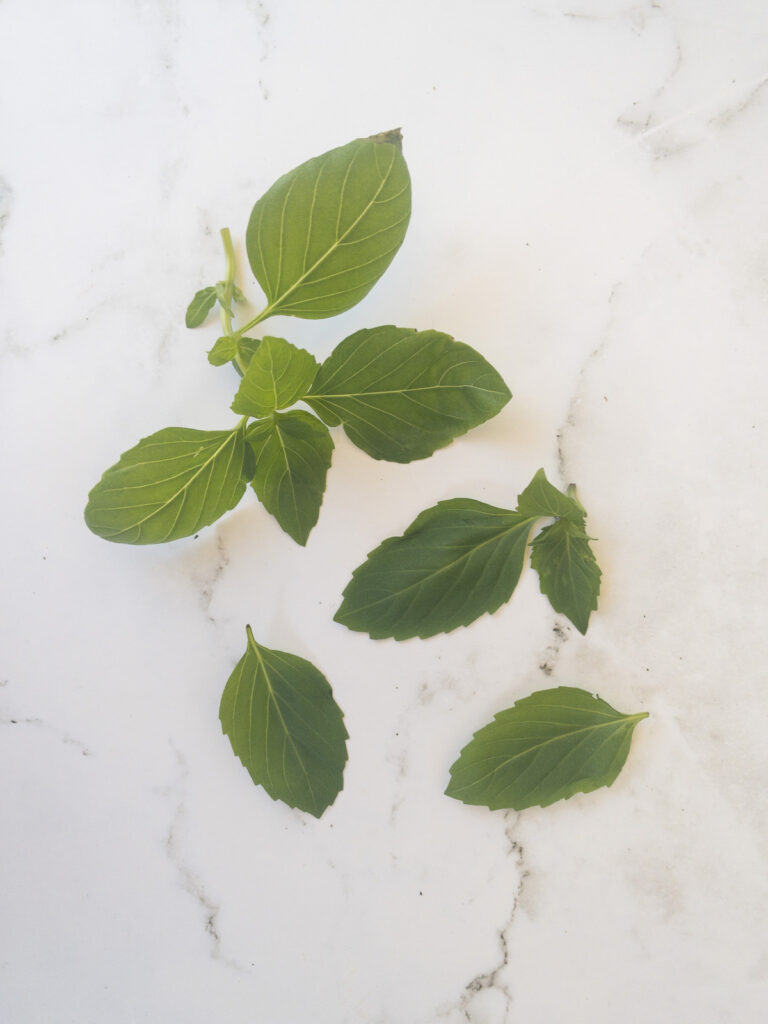
As you can see from the Latin name (O. basilicum ‘Cinnamon’), this cultivar is different from Thai basil (O. basilicum var. thyrsiflora).
Despite having different latin names and tasting pretty differently, too, these two basil varieties are often confused for one another.
The question becomes, why?
Why Are Cinnamon Basil and Thai Basil Confused for One Another?
The reason Thai basil is sometimes called cinnamon basil comes down to linguistics.
In Vietnamese, O. basilicum var. thyrsiflora (the cultivar North Americans call Thai Basil) is typically called húng quế or rau quế. As it happens, the Vietnamese word quế means “cinnamon” – hence the confusion!
According to Vietnamese-American food blogger, Kim Bao:
“In Vietnamese [Thai basil is] called: húng quế, rau quế, or sometimes even rau húng quế. The literal translation is cinnamon mint. In English it is most commonly referred to as Thai Basil or Taiwanese Basil.”
Although the Vietnamese word for Thai basil has the word cinnamon in it, Vietnamese húng quế (aka Thai Basil) is different from true cinnamon basil O. basilicum ‘Cinnamon’.
What’s the Difference Between Cinnamon Basil vs Thai Basil?
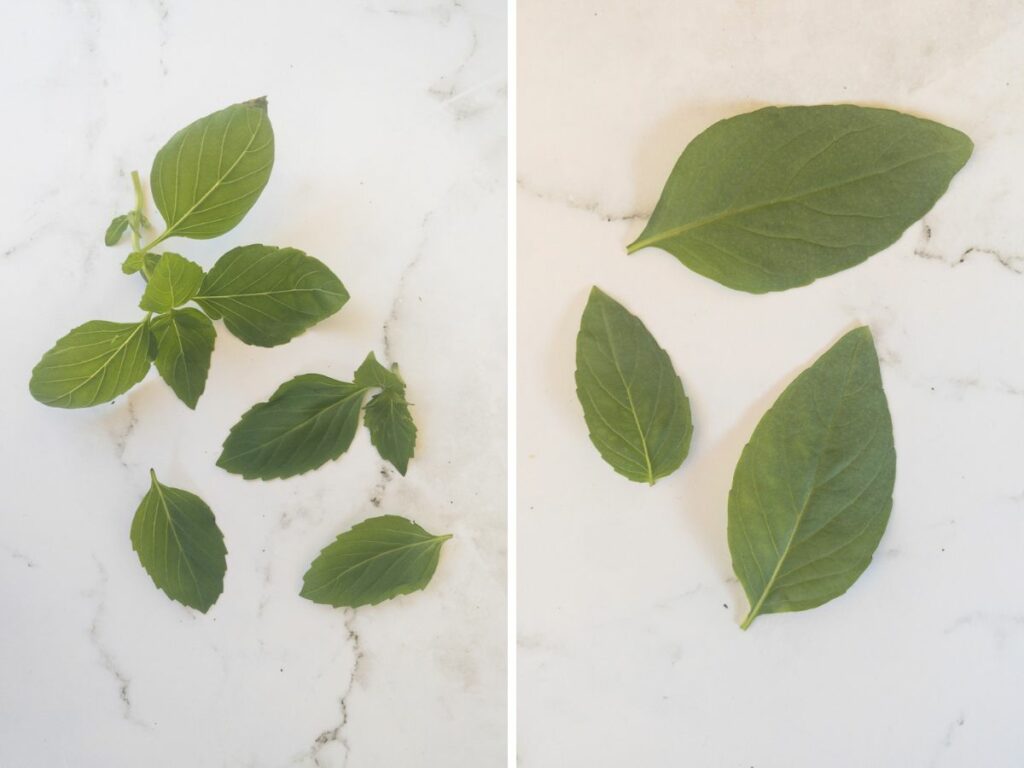
Cinnamon basil (O. basilicum ‘Cinnamon’) contains methyl cinnamate, which is the same chemical compound found in cinnamon that gives it its distinctive cinnamon spice taste.
If you ever catch a whiff of cinnamon basil growing on the plant, you might conclude (as I did) that it smells quite unlike most other types of basil.
Cinnamon basill has a very fresh, earthy aroma with no anise scent detectable. The taste is also quite earthy, and not particularly sweet, with a very fresh, almost grassy flavor. While cinnamon basil is sometimes described as spicy, I find it spicy in the way cinnamon is spicy, not in the way a chilli pepper is spicy. The leaves are also quite delicate, thin, and soft, and don’t stand up to high heat or long duration cooking.
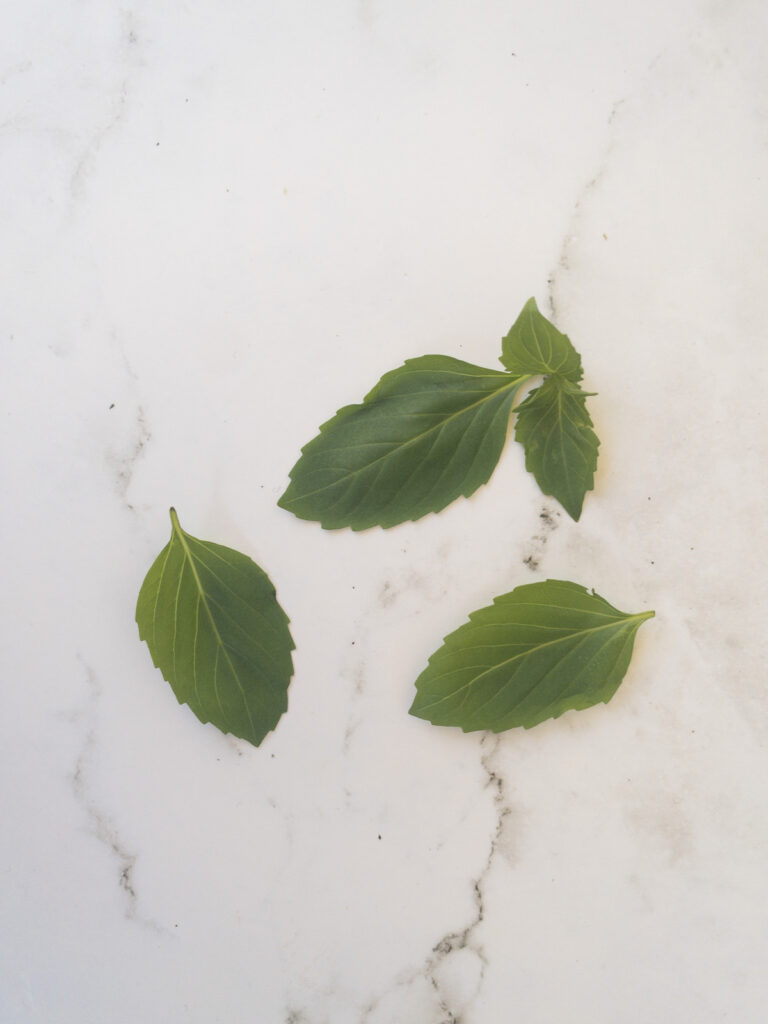
Cinnamon basil is great in cocktails and used fresh torn into fresh salads, or paired with fruit. I also really like it with sharp, hard cheeses, like a Mazuda or even Parmesan Cheese (although I personally wouldn’t make an entire traditional pesto using cinnamon basil).
In contrast, Thai basil (O. basilicum var. thyrsiflora) has a distinctive fresh and black liquorice or sweet anise flavor to it and is well suited to many southeast Asian recipes. Toss it in your spring rolls, use it in your Thai basil chicken, or throw it into your curries. Thai basil does a lot of work in Thai cuisine, as the name suggests, but also in Vietnamese, Cambodian, and Laoatian dishes.
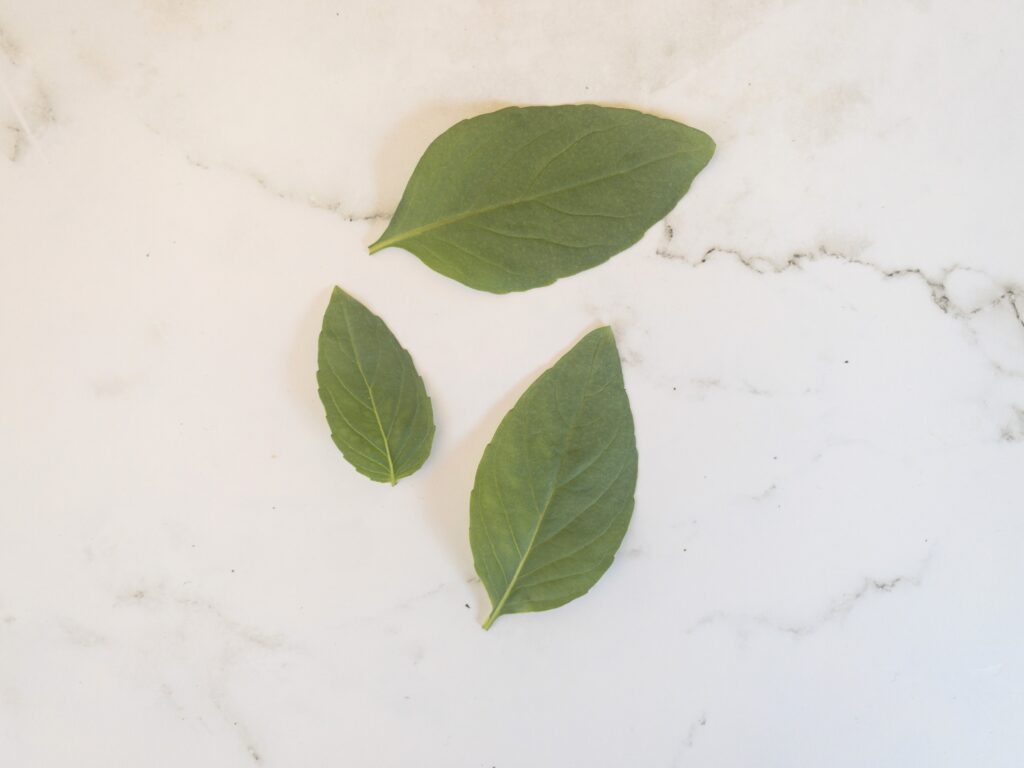
Thai basil is often used in dishes that call for high heat, as it stands up well to cooking – better than many types of basil, including cinnamon basil (which, due to the delicate leaves and the methyl cinnamate, doesn’t stand up well to high heat).
Key Differences between Thai Basil and Cinnamon Basil, at a Glance
Flavor
- Thai basil has an anise or black licorice flavor that has a nice sweetness to it.
- Cinnamon basil isn’t sweet, and has an earthy fresh flavor with a taste of cinnamon.
Uses
- Cinnamon basil is great eaten raw in salads and with fruit, tossed/muddled into a cocktail, to infuse vodka, syrups, or vinegars, and in sweet baking that calls for cinnamon flavor.
- Thai basil is great in classic southeast asian recipes like curries, spring rolls, Asian noodle bowls, pho, etc.
Heat Tolerance
- Cinnamon basil doesn’t do well at high heat or cooked over longer periods.
- Thai basil is one of the few basil varieties that is heat tolerant when cooking.
Appearance
- Cinnamon basil has narrow, delicate and somewhat shiny leaves that are noticeable serrated. They are more pointed and narrow than a sweet basil leaf. The sometimes have dark red or purple veins or stems, but not always.
- Thai basil leaves are also narrow, but less delicate and thin than a cinnamon basil leaf. They are also less noticeably serrated. It often has a dark purple stem, but not always.

Can You Substitute Cinnamon Basil for Thai Basil in a Recipe (or Vice Versa)?
While you can sub cinnamon basil for Thai basil or vice versa, you probably shouldn’t. They taste very different.

If a recipe calls for fresh Thai basil leaves and you don’t have any, you could substitute sweet basil varieties, such as regular sweet basil leaves or a purple basil (such as Dark Opal basil), so long as the recipe doesn’t call for cooking the basil at high heat or for a long time (purple basil leaves turn kind of a gross black color when subjected to too much heat).
By substituting Thai basil leaves for common sweet basil leaves in Asian dishes, you’ll lose some of the flavor profile of the Thai basil taste, but for most dishes they’ll still end up tasting good, if less authentic. If you have a variety of basil types on hand, you can also substitute Thai basil for another type of basil with a strong anise flavor – Persian or Middle Eastern basil is one of the varieties that comes to mind.
If you have a recipe that calls for Cinnamon basil, don’t replace Thai basil for the cinnamon basil variety, as they really taste quite different.
You’ll be better off subbing in one of the spicier basils (Cardinal Basil, Spicy Bush Basil) plus actual cinnamon, although this will definitely require a bit of experimenting on your part in terms of proportions. Realistically, since cinnamon basil is a fairly niche plant, if you’re googling for recipes with cinnamon basil, you should probably actually have some cinnamon basil plants in your herb garden or on your countertop!
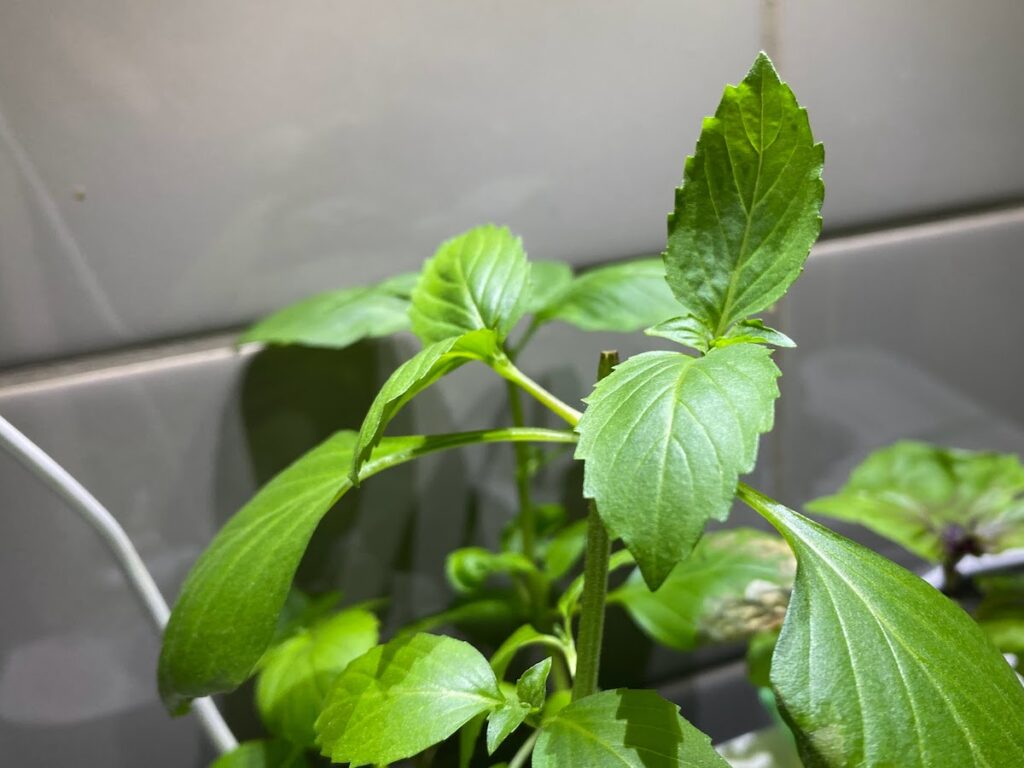
Is Cinnamon Basil used in Southeast Asian Cooking?
True cinnamon basil isn’t a basil variety that’s actually used in southeast Asian and Thai cuisine as a culinary herb. While there are certainly a number of sources on the Internet that claim cinnamon basil is common in Asian cuisine, I suspect they suffer from the same confusion leading back to the Vietnamese quế explanation!
Final Thoughts
Thai basil vs Cinnamon basil is commonly confused for one another due to the local Vietnamese name for Thai basil, húng quế. However, they are in fact two different cultivars of basil, and true cinnamon basil O. basilicum ‘Cinnamon’ isn’t commonly used as a culinary herb in southeast Asian and Thai cuisine.

